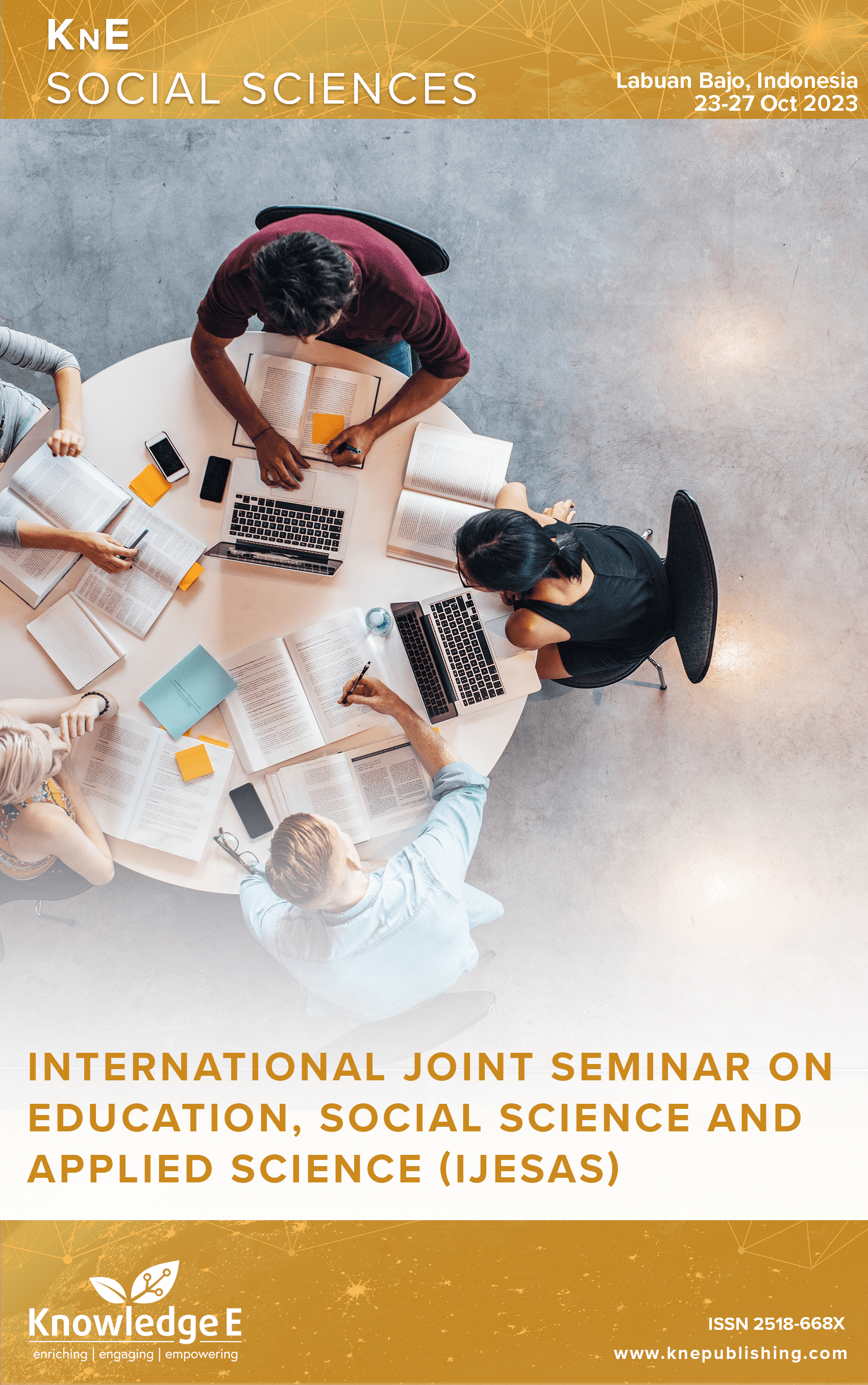Study of Critical Thinking Skill Patterns in Pre-service Physics Teachers Through Cluster Analysis
DOI:
https://doi.org/10.18502/kss.v9i19.16540Abstract
Critical thinking skills are very important for pre-service teachers to train. Therefore, it is important to analyze their pattern for pre-service physics teachers. This empirical research uses a quantitative approach. Data collection was measured using critical thinking skills tests. The indicators studied, include elementary clarification, basic support, inference, advanced clarification, and strategy and tactics. This instrument is in multiple-choice form with five answer options. One hundred pre-service physics teachers participated in this research. The data analysis were done using K-means clustering. The results of this research show that there are five groups of critical thinking skill mindsets for pre-service physics teachers. In addition, it was found that the pattern of critical thinking skills of pre-service physics teachers among students was in the elementary clarification (47.50) indicator in the very-low category, basic support (50.50) in the low category, inference (60.99) in the fair category, advanced clarification (43.00) with the very-low category, and strategy and tactics (52.50) with the low category. These results indicate that the pattern of critical thinking skills of pre-service physics teachers needs to receive more attention to be improved in the future.
Keywords: critical thinking skills, K-means clustering, pre-service physics teachers
References
Alsaleh NJ. Teaching critical thinking skills: literature review. Turkish Online Journal of Educational Technology-TOJET. 2020;19(1):21–39.
Wale BD, Bishaw KS. Effects of using inquiry-based learning on EFL students’ critical thinking skills. Asian-Pacific Journal of Second and Foreign Language Education. 2020;5(1):1–14. DOI: https://doi.org/10.1186/s40862-020-00090-2
O’Reilly C, Devitt A, Hayes N. Critical thinking in the preschool classroom-A systematic literature review. Think Skills Creativity. 2022;46:101110. DOI: https://doi.org/10.1016/j.tsc.2022.101110
Makhene A. Argumentation: A methodology to facilitate critical thinking. Int J Nurs Educ Scholarsh. 2017 Jun;14(1):20160030. DOI: https://doi.org/10.1515/ijnes-2016-0030
Nor HM, Sihes AJ. Critical thinking skills in education: A systematic literature review. Int J Acad Res Bus Soc Sci. 2021;11(11):198–201. DOI: https://doi.org/10.6007/IJARBSS/v11-i11/11529
Tiruneh DT, De Cock M, Weldeslassie AG, Elen J, Janssen R. Measuring critical thinking in physics: Development and validation of a critical thinking test in electricity and magnetism. Int J Sci Math Educ. 2017;15(4):663–82. DOI: https://doi.org/10.1007/s10763-016-9723-0
Tiruneh DT, Cock M, Elen J. Designing learning environments for critical thinking: Examining effective instructional approaches. Int J Sci Math Educ. 2018;16(6):1065– 89. DOI: https://doi.org/10.1007/s10763-017-9829-z
Faridi H, Tuli N, Mantri A, Singh G, Gargrish S. A framework utilizing augmented reality to improve critical thinking ability and learning gain of the students in Physics. Comput Appl Eng Educ. 2021;29(1):258–73. DOI: https://doi.org/10.1002/cae.22342
Nuraini N. Profil keterampilan berpikir kritis mahasiswa calon guru biologi sebagai upaya mempersiapkan generasi abad 21. Didaktika Biologi: Jurnal Penelitian Pendidikan Biologi. 2017;1(2):89–96.
Changwong K, Sukkamart A, Sisan B. Critical thinking skill development: Analysis of a new learning management model for Thai high schools. J Int Stud. 2018;11(2):37– 48. DOI: https://doi.org/10.14254/2071-8330.2018/11-2/3
Anazifa R, Djukri D. Project- based learning and problem- based learning: Are they effective to improve student’s thinking skills? Jurnal Pendidikan IPA Indonesia. 2017;6(2):346–55. DOI: https://doi.org/10.15294/jpii.v6i2.11100
Shamboul HA. The importance of critical thinking on teaching learning process. Open J Soc Sci. 2022;10(1):29–35. DOI: https://doi.org/10.4236/jss.2022.101003
Bezanilla MJ, Fernández-Nogueira D, Poblete M, Galindo-Domínguez H. Methodologies for teaching-learning critical thinking in higher education: The teacher’s view. Think Skills Creativity. 2019;33:100584. DOI: https://doi.org/10.1016/j.tsc.2019.100584
Oner D, Aggul YG. Critical thinking for teachers. Integrated education and learning. Cham: Springer International Publishing; 2023. pp. 319–36. DOI: https://doi.org/10.1007/978-3-031-15963-3_18
Kozikoglu I. Investigating critical thinking in prospective teachers: metacognitive skills, problem solving skills and academic self-efficacy. Journal of Social Studies Education Research. 2019;10(2):111–30.
Sönmez E, Kabataş Memiş E, Yerlikaya Z. The effect of practices based on argumentation-based inquiry approach on teacher candidates’ critical thinking. Educ Stud. 2021;47(1):59–83. DOI: https://doi.org/10.1080/03055698.2019.1654364
Nitko AJ, Brookhart SM. “Assessment and grading in classrooms.” (2008).
Bustami Y. The implementation of contextual learning to enhance biology students’ critical thinking skills. Jurnal Pendidikan IPA Indonesia. 2018;7(4):451–7. DOI: https://doi.org/10.15294/jpii.v7i4.11721
Hartigan JA, Wong MA. Algorithm AS 136: A k-means clustering algorithm. J R Stat Soc [Ser A]. 1979;28(1):100–8. DOI: https://doi.org/10.2307/2346830
Styers ML. “Active learning in flipped life science courses promotes development of critical thinking skills.” CBE Life Sciences Education. vol. 17, no. 3, p. 2018. https://doi.org/10.1187/cbe.16-11-0332. DOI: https://doi.org/10.1187/cbe.16-11-0332
Nelson LP, Crow ML. Do active-learning strategies improve students’ critical thinking? Higher Education Studies. 2014;4(2):77–90. DOI: https://doi.org/10.5539/hes.v4n2p77
Anas M, Zulistiani Z, Kurnia I, Daniati E, Muslih B, Riwayatiningsih R, et al. Developing critical thinking achievement in macroeconomics course trough ADI learning based. Revista de Gest ao Social e Ambiental. 2023;17(8):1–13. DOI: https://doi.org/10.24857/rgsa.v17n8-010
Kabataş Memiş E, Çakan Akkaş BN. Developing critical thinking skills in the thinkingdiscussion- writing cycle: The argumentation-based inquiry approach. Asia Pac Educ Rev. 2020;21(3):441–53. DOI: https://doi.org/10.1007/s12564-020-09635-z
R. Perdana, “Analysis of student critical and creative thinking (CCT) skills on chemistry: A study of gender differences.” Journal of Educational and Social Research. vol. 9, no. 4, p. 2019. DOI: https://doi.org/10.36941/jesr-2019-0006
Fuad NM, Zubaidah S, Mahanal S, Suarsini E. Improving junior high schools’ critical thinking skills based on test three different models of learning. Int J Instr. 2017;10(1):101–16. DOI: https://doi.org/10.12973/iji.2017.1017a

